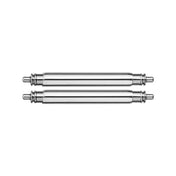The story of the first watch is a captivating quest dating back to a time when humanity sought to measure time more precisely. This temporal adventure begins in the 15th century, with the birth of the first mechanical watch.
It was in 1505 that German watchmaker Peter Henlein was credited with creating the first wearable watch. Known for his exceptional skills in creating small mechanisms, Henlein revolutionized watchmaking by designing a pocket watch that operated using a mechanical movement.
Henlein's first watch, often called the "Nuremberg Egg" because of its distinctive oval shape, was powered by a hairspring. This innovation ushered in the era of wearable watches, freeing people from dependence on large sundials and monumental clocks.

Over the decades, watchmakers have perfected watch mechanisms, introducing features such as hour and minute hands. Watchmaking craftsmanship developed, with watchmaking centers emerging in Switzerland, France and England.
The 18th century saw the advent of the wristwatch, with Abraham-Louis Breguet and other renowned watchmakers perfecting the mechanisms and complications. The watch has become not only a utilitarian instrument but also a symbol of status and style.

The story of the first watch highlights human ingenuity, the passion for precise timekeeping and the constant evolution of watchmaking. Today, watches are much more than just instruments; they are works of art, heirlooms passed down through generations.
In conclusion, the first watch opened the way to a new era, marking the beginning of a watchmaking adventure that continues to this day. This heritage continues to fascinate us, reminding us that every watch we wear has deep roots in a history full of innovation and passion for the art of measuring time."

